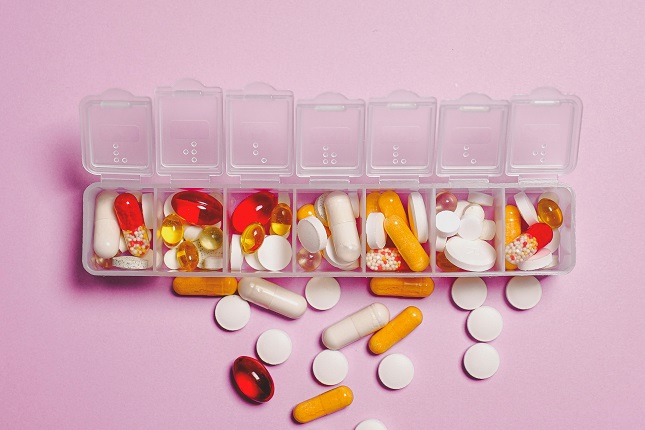Prescription medication costs have been climbing steadily over the years, often placing a heavy financial burden on many individuals and families. Whether you have insurance or pay out of pocket, the expense of medications can feel overwhelming.
Fortunately, there are practical ways to reduce these costs without sacrificing your health or treatment effectiveness.
Understanding your options and advocating for yourself can lead to significant savings. This article explores five effective strategies to help you pay less for your prescriptions:
- Using generic medications
- Prescription Discount Cards or Coupons
- Shopping around more often
- Lower cost alternatives
- Assistance Prescription Programs
1) Use Generic Medications
Generic medications are a powerful and often overlooked way to save money on prescriptions. These drugs contain the same active ingredients as their brand-name counterparts and are held to the same rigorous standards for safety, quality, and effectiveness by regulatory agencies like the FDA. The key difference is that generics usually cost a fraction of the price because manufacturers don’t have the same development and marketing expenses.
Many doctors and pharmacists encourage patients to ask about generic alternatives, especially if they are prescribed a costly brand-name drug. Let’s say you are prescribed a semaglutide for diabetes management. Searching for an Ozempic coupon or asking about generic equivalents can dramatically reduce your costs. Using such coupons or discount programs can further amplify your savings.
It is always important to confirm with your healthcare provider that the generic version is appropriate for you. Some patients may have specific reasons to stick with brand-name drugs, but for many, generics offer an equally effective and more affordable choice.
2) Take Advantage of Prescription Discount Cards and Coupons
Prescription discount cards and coupons have become increasingly popular tools to help consumers lower medication expenses. These programs work by negotiating prices with pharmacies on your behalf, offering discounts that are often deeper than insurance co-pays. Many websites and apps like GoodRx and SingleCare allow you to search for the best price on your medication across various local and online pharmacies.
Even if you have insurance, these discount cards can sometimes offer better savings, especially for medications with high deductibles or co-insurance. If you don’t have insurance, these programs can be a lifeline. When using a discount card, you simply show the card or coupon at the pharmacy, and the discount is applied at checkout.
It’s a good idea to compare prices with and without your insurance and discount cards. Sometimes, a discount card can cut costs dramatically. Since these tools are free to use, it makes sense to check them every time you fill a prescription.
3) Shop Around at Different Pharmacies
Pharmacy prices can vary widely for the same prescription, so shopping around can be surprisingly effective in reducing costs. Chain pharmacies, local independent stores, big-box retailers, and online pharmacies all have different pricing structures and discounts. Some may have special promotions or membership plans that provide extra savings.
Before filling your prescription, take a moment to call or check online prices at multiple pharmacies. Online tools and apps make this easier than ever. For medications you take regularly, establishing a good relationship with a particular pharmacy might lead to personalized discounts or better pricing.
Additionally, mail-order pharmacies are worth considering, especially for maintenance medications you take long-term. These services often offer lower prices and the convenience of home delivery, but always verify the pharmacy’s credentials to ensure safety and authenticity.
4) Ask for Samples or Lower-Cost Alternatives
Healthcare providers play a crucial role in helping you manage medication costs. Don’t hesitate to discuss your financial concerns openly with your doctor or pharmacist. Sometimes, physicians have access to medication samples that can temporarily reduce your expenses, allowing you to try the drug before committing to a full prescription.
Moreover, doctors can often prescribe therapeutic alternatives or adjust dosages to make treatments more affordable. For instance, a different medication in the same class might be less expensive or covered better by your insurance.
Another approach is pill splitting, which involves dividing higher-dose tablets to take smaller doses if it’s safe and recommended. This strategy can extend your medication supply and reduce overall spending. Always check with your doctor or pharmacist before altering how you take your medication.
5) Prescription Assistance Programs (PAPs)
Many pharmaceutical companies and nonprofit organizations offer prescription assistance programs (PAPs) to help eligible patients obtain medications at reduced or no cost. These programs are designed for individuals who meet income guidelines or have specific health conditions.
Applying for a PAP usually involves filling out an application and providing proof of income or insurance status. The paperwork can be daunting, but many resources online and patient advocacy groups can help you navigate the process.
Some well-known PAPs cover expensive medications for chronic conditions, cancer treatments, and rare diseases. If you take a costly medication, it’s worth researching whether a PAP is available for your prescription. This option can be a game-changer for patients facing high drug costs.
In Summary
Reducing prescription drug costs doesn’t have to be complicated. By using generics, leveraging discount cards, shopping around, communicating with your healthcare provider, exploring assistance programs, maximizing insurance benefits, and considering OTC options, you can significantly ease the financial strain of medication expenses. Taking these steps empowers you to manage your health proactively while protecting your budget. Don’t hesitate to be an informed and assertive advocate for your prescription needs—your wallet and well-being will thank you.









































